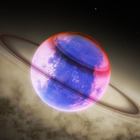|
Procedural Cities, Structures & Ruins
|
|
| laiod | Date: Monday, 31.03.2014, 20:01 | Message # 16 |
 Space Pilot
Group: Users
 United States
United States
Messages: 95
Status: Offline
| If there do end up being some sort of civilization that is generated, it will most likely be VERY rare. But Earth should have something on it since we know what kind of life lives on Earth. 
ASUS Radeon HD 7770 2GB, Crucial Ballistix 8GB x2, AMD FX-4130 3.8GHz, 1TB 7200rpm drive
|
| |
| |
| Ingolifs | Date: Tuesday, 01.04.2014, 09:57 | Message # 17 |
|
Space Tourist
Group: Users
 New Zealand
New Zealand
Messages: 30
Status: Offline
| The most common structure by far on a multicellular life planet would be some form of plant. I would very much like to see various morphologies of tree-like objects growing on the ground. Realistically, this would cover the vast gulf of multicellular organisms between primeval mud-crawlers up to agricultural iron-age societies. It's only then do you see an intelligent species with the ability to alter the landscape and create structures that could be procedurally generated.
For ideas on procedurally generated cities, I recommend Shamus Young:
https://www.youtube.com/watch?v=-d2-PtK4F6Y
While the city generated in the link looks very twentieth century, it wouldn't be hard to make it look more exotic by altering the shapes that are allowed to generate.
The other question is, how rare should it be to encounter these structures? It's commonly accepted that they should be very rare, but how rare is very rare? The average spaceengine enthusiast is probably gonna check out hundreds, if not thousands of habitable planets over the course of gameplay, which means even a rare event will start to feel common in the long run.
If we assume all sentient life develops in the same way it does on earth (a big assumption, but it's all we have to go on), and we divide earth's lifetime into seperate periods by organism complexity class, and measure the relative lengths of each reign, this is what we get:
[Wikipedia as a source]
Total age of the earth: 4.6 billion years. (100%)
No life: 1,600,000,000 years duration (34.7%)
Unicellular life: 900,000,000 years duration (19.5%) [first undisputed signs of life 3 billion years ago]
Multicellular life: 1,560,000,000 years duration (33.9%) [first multicellular organism dates to 2.1 billion years ago]
Cambrian explosion: 120,000,000 years duration (2.6%) [prolific development of large critters, land colonised by a sort of fungal moss]
First terrestrial plants: 420,000,000 years duration (9.1%) [Silurian era. Earth started looking recognisably earthlike]
Agricultural revolution: 10,000 years duration (0.0002%) [mankind started building permanent habitats]
Modern day: 200 years duration (0.000004%) [From the industrial revolution to now]
First of all, I think this is a fascinating look into our evolutionary history. It really gives a sense of scale, and an idea of how long it took to get the basic operations of biology to work efficiently.
I believe humans will be a (interplanetary) space faring civilisation within 200 years. Assuming humans don't all miraculously die off at once, we're good to go for another 500 million to 1 billion years until which time the gradually-evolving sun heats the earth up past the boiling point of water.
From this, I think it's clear we're in a highly transitional period. The chances of finding another planet with the inhabitants at our current level of development are vanishingly small. This suggests to me that you either find a mossy or tree-like world, or one covered with techno-goliath superstructures.
I should also point out that i think this is a bad model. It implies that exactly 420 million years are required for an intelligent agrarian society to develop, and 10,000 years are needed for them to figure out how to automate the production of things. The truth is much more likely to be stochastic - there is a constant small chance that the right conditions will develop for life to jump from one tier to the next. An agrarian society may never get the right conditions to progress to an industrial one, or it may do so surprisingly rapidly. An industrial society may just evolve on the wrong kind of planet for space travel.
For this reason, I think the chances of finding each tier of life-formed structures should diminish exponentially, and with an aggressive fall-off (like say 1/100).
(sorry if this appears a bit rambly. My point was a lot longer than I expected it to be.)
|
| |
| |
| DJKiran | Date: Tuesday, 01.04.2014, 23:48 | Message # 18 |
|
Observer
Group: Users
 United Kingdom
United Kingdom
Messages: 10
Status: Offline
| It would be interesting to see how the evolution of life on planets occurs.
I envision a future when average computers are as powerful as todays supercomputers, and the evolution of life would look a bit like this -
It's a bit like SimCity, but more automated. With mud huts appearing, yellow lights resembling fires for use as light, then lights travelling across oceans to resemble exploration, then those lights turning brighter, forming a more structured pattern, being more concentrated than others, signifying streets and cities.
Then accompanying moons get lights on them, with the tallest tower race beginning. First being small, then getting gradually taller until most buildings are above the clouds and you start to see larger and more complex stations and bases orbiting around some planets of the system.
Edited by DJKiran - Tuesday, 01.04.2014, 23:49 |
| |
| |
| Aerospacefag | Date: Wednesday, 02.04.2014, 19:11 | Message # 19 |
 Pioneer
Group: Users
 Russian Federation
Russian Federation
Messages: 401
Status: Offline
| Speaking about city construction, I've discovered a good collection of information on "arcology". So, as we discussed it before and as I was writing on the forum year ago, arcologies are best suited for portraying on the engine. They will consist of a series of isolated blocks of different size and functionality, but all of them relatively big and simple to describe. For example, a giant pyramid, supporting life of 100 000 people, or a cylinder that produces 1 gigawatt of energy from small amount of hydrogen isotopes.
http://tvtropes.org/pmwiki/pmwiki.php/Analysis/Arcology
Although, even if it is written that the concept itself was introduced in the 1950s, I've read about these projects from as early as the beginning of the century, because that was the period when people really started to realize the importance of preserving life on the planet.
|
| |
| |
| FaceDeer | Date: Thursday, 17.04.2014, 06:11 | Message # 20 |
|
Space Pilot
Group: Users
 Canada
Canada
Messages: 117
Status: Offline
| Assuming the Space Engine universe isn't teeming with interstellar-capable civilizations, I imagine the most likely explanation is because civilizations have a short "lifespan" for some reason. Which would mean that although active civilizations would be very rare, the ancient *ruins* of civilizations could be pretty common.
Ruins are probably much easier to procedurally generate than active civilizations, they can be much sparser and more arbitrary in their placement. Maybe all that's left of a civilization is a deserted moonbase, or a bunch of battered satellites, or some crumbling foundations scattered here and there in a desert. And there's less expectation of being able to interact with them, too.
So even if active civilizations don't get added, I would really love to see ruins at some point. It would help give a sense of the incredible age of the universe to go along with its physical vastness.
|
| |
| |
| RockoRocks | Date: Thursday, 17.04.2014, 20:03 | Message # 21 |
 World Builder
Group: Users
 Belgium
Belgium
Messages: 674
Status: Offline
| Quote FaceDeer (  ) *ruins*
I would really love to look up abandoned moonbases and ruins in Space Engine. It would look so good in screenshots.
I will be inactive on this forum for the time being. Might come back eventually
AMD AR-3305M APU w/ Radeon HD 1.90 GHz 6,00 GB RAM
|
| |
| |